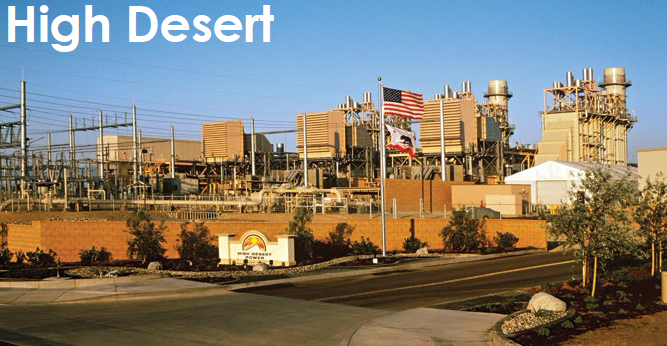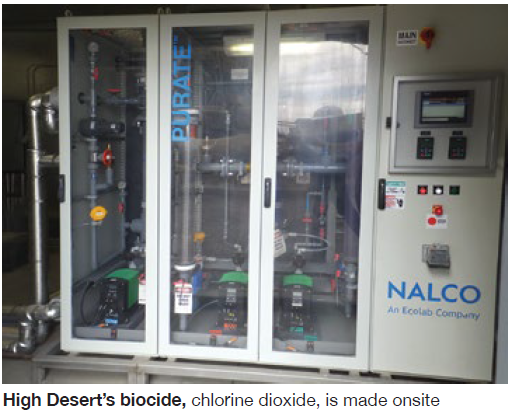Chlorine dioxide bests bleach for organics control in cooling water
Challenge. High Desert Power Project uses a zero-liquid discharge system to process cooling-tower blowdown for recycle. The ZLD system incorporates microfiltration, softening, two stages of reverse-osmosis concentration, forced-circulation crystallization, and a centrifuge for crystallizer solids removal. The plant’s desert location dictates the use of multiple makeup water sources of varying quality, making microbiological and organics control challenging.
The facility historically used bleach to control organics in the cooling-water system, but the existing bleach feed system was unreliable, with pumps losing prime at the worst possible time, pump failures, loss of bleach feed, cracked and leaking tubing, ORP probe failures, etc.
Erratic oxidant feed impacted ZLD-system performance and caused disturbances in the cooling-tower blowdown system, wasting time and money. Excessive chlorides from the bleach application affected ZLD cycles.
To achieve good results, free-chlorine concentrations often exceeded 1 ppm. Performance was mixed using bleach: Plate counts were acceptable, but sessile populations were high, indicating the presence of a highly insulating biofilm.
Solution. Extensive research convinced plant personnel to replace bleach with chlorine dioxide. A six-month pilot test was conducted in 2017 and it confirmed that conclusion. The biocide supply system selected, a turnkey solution from Nalco, uses sulfuric acid and the chemical company’s Purate™ to make chlorine dioxide (photo). Note that the acid tank required was not included in the turnkey solution.
Use of chlorine dioxide reduced RO membrane cleanings, improved cooling-tower appearance, improved reliability in biocide application, helped optimize manpower requirements, reduced chlorides, reduced corrosion potential in the condenser, and lowered the total cost of operation.
Results. The new system runs reliably (Nalco was contracted for maintenance) and the proper concentration of oxidant is applied consistently. Chloride loading on the ZLD plant was reduced by at least 15% and microbial monitoring shows good control of both planktonic and sessile bacterial populations. The cooling tower is consistently cleaner. Plus, RO and microfilter membrane cleanings have been halved. Finally, the use of chlorine dioxide is less expensive than bleach in terms of total operating cost.
Project participants:
Ross Walden, O&M manager
Victor Barron, assistant plant manager
High Desert Power Project
Owned by Avenue Capital
Operated by NAES Corp
830-MW, gas-fired, 3 × 1 combined cycle located in Victorville, Calif
Plant manager: Claude Couvillion (former), Victor Barron (current)





